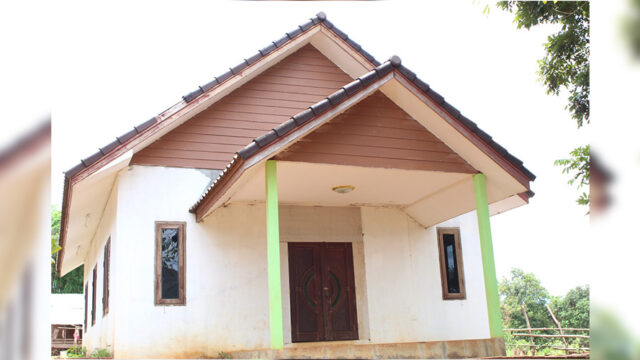Was there a heavenly sanctuary before sin?

I assume that your question is about the heavenly sanctuary itself, its nature and purpose, before the entrance of sin in the cosmos. Biblical revelation provides information that sheds some light on your question and focuses on God Himself.
God Is the Creator
The doctrine of creation is foundational for a theology of the heavenly sanctuary. Here I will mention three elements about God and creation. First, every member of the Godhead was directly involved in creation—the Holy Spirit (Gen. 1:2), the Son (John 1:1-3), and the Father (Gen. 1:1; Heb. 11:3). This one God created the totality of the cosmos—the cosmos itself and everything in it—and consequently He does not belong to the realm of creation. Second, creating through the word presupposes a distance between the Creator and what came into existence at His command. He was not trapped within creation. Third, God existed by Himself outside the cosmos He created. Since the Creator is far beyond His creation—He is the transcendent God—creation is not large enough to encompass the fullness of the divine, as noted in 1 Kings 8:27: “The heavens, even the highest heaven, cannot contain you” (NIV).
God Is the Only Cosmic Resident Deity
The Godhead, who is, by nature, even essentially different from His creation, chose to enter into creation to dwell among His creatures (cf. 2 Chron. 30:27). This was divine condescension; a glorious display of divine love toward all creatures. God localized Himself within our created space to be near and accessible to His cosmic children. It is therefore at the moment of creation that God condescended to set His dwelling within creation. The psalmist takes us back to creation and indicates that the earth was firmly established then, and adds, “Your throne is established from of old; You are from everlasting” (Ps. 93:2). God’s ruling presence from His sanctuary is from of old—from the beginning—but God Himself is everlasting. Jeremiah is more explicit: “A glorious high throne from the beginning is the place of our sanctuary” (Jer. 17:12; cf. Gen. 1:1). The throne is a metonym for His sanctuary and His ruling power (Ps. 11:4; 103:19). This sanctuary was not built by human hands, but by God (Heb. 9:11). In that unique space heavenly beings worshipped and served the Resident Deity (Ps. 103:19-22). Once sin entered the cosmos, God decided to deal with it from His heavenly dwelling (cf. 1 Kings 8:30, 32, 38, 39). The redemptive work of the Son on the cross and in the heavenly temple would bring to a final resolution the cosmic conflict. The earthly tabernacle with its regulations was a type of Christ’s work (Heb. 10:1).
Back to the Beginning: The Resident Deity
What happens after the cosmic problem is resolved? God will continue to be the cosmic resident deity. His nearness is indispensable for the sustenance of creation; otherwise, creation left to itself would collapse. But there is a new chapter in the cosmic history of the heavenly dwelling of God. God will move His dwelling to a small planet, located almost at the edges of the Milky Way, called Earth. John the revelator saw the heavenly dwelling of God descending from heaven to the new earth and commented, “He will dwell with them, and they shall be His people. God Himself will be with themand be their God” (Rev. 21:3). Why is God moving here? Perhaps because His Son is an earthling, for He is our brother!








